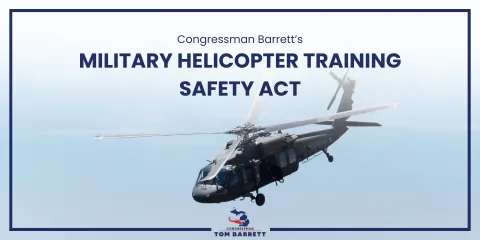Making Air Travel Safer

The U.S. aviation system handles approximately 45,000 flights per day, and every single passenger should have peace of mind that their flight will reach its destination free from harm. The deadly mid-air crash between a passenger jet and an Army helicopter over the Potomac River in Washington, D.C., earlier this year shocked and saddened us all. This tragedy left the families of 67 passengers devastated and searching for answers.
Helicopters from every branch of the armed forces, like the one in that collision, routinely fly training missions in civilian airspace, but they aren’t outfitted with traffic collision avoidance systems (TCAS). If the Black Hawk helicopter flying over the Potomac River had contained this system, the crash with the passenger plane might never have happened.
This is why I introduced my Military Helicopter Training Safety Act (H.R. 1898). This bipartisan legislation would begin the process of equipping military helicopters with the same collision avoidance technology used by civilian aircraft. Recently, the House took a major step towards accomplishing this goal by passing the Military Helicopter Training Safety Act – my fourth bill to pass the House this year.
My bill would take a vital step towards improving aviation safety for everyone by requiring the Department of Defense to study the feasibility of adding collision avoidance TCAS and other technology in military helicopters to help avoid future crashes. Once this review is complete, we can take the next steps to prevent future tragedies.
My bill passed the House as part of the annual National Defense Authorization Act, which now requires Senate approval before heading to the president’s desk. You can read more about the NDAA here. With this legislation, we’re ensuring the U.S. military remains ready to defend our nation, protect American lives, and preserve the freedoms we hold dear, while keeping American skies safe.